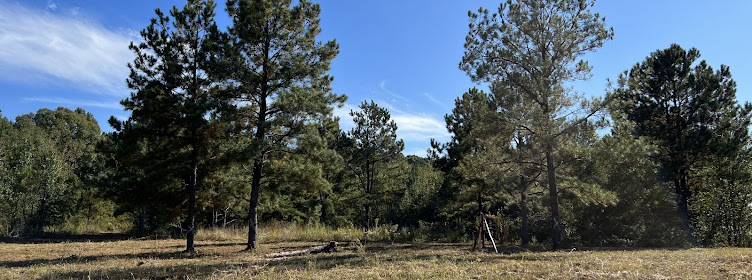In the world of shooting sports, the term flat range refers to the environment where shooters practice in a static environment. There is little to no stress and you aren't being shot back at. Sometimes you can move around but usually the targets don't move. Almost every range, indoor or outdoor, is a flat range. Maybe you have a paper target on a track at an indoor range or you have paper or steel targets near a tall dirt berm outdoors. Maybe the ground is dirt and grass, maybe it's concrete or gravel. Maybe you have a designated lane, maybe you have open lateral movement. Regardless, the flat range is a low stress environment that doesn't present what some refer to as a two-way range. Most mass shooting occur in "gun free zones" where the one person who has a gun in a "gun free zone" is free to do as they please. Sadly, that appears to be murder.
I haven't participated in a practical shooting match for a while but the last one I was in was under what's called Production Class. In Production Class under USPSA rules, you shoot with unmodified, stock firearms and load only 10 rounds into the magazine. I shoot a Walther PPQ M1 in 9mm. You can have larger or standard magazines but only load 10 rounds. I have both 15 and 17 round magazines for my pistol. Again, I am limited to 10 rounds loaded in each.
These matches are usually performed on a closed range that is heavily controlled for safety. The match is setup so that wood target stands have cardboard targets stapled to the wood. You shoot the various targets according to the course of fire. You are scored according to your shot placements with the target having zones worth different points and try to be faster and more accurately than the other players.
I usually have around 2 or 3 spare magazines on my belt loaded with 10 rounds each along with the one magazine in the gun, also with 10 rounds. As I move through the course of fire, I will reload my pistol at a speed that I can reliably with a fresh magazine as needed. It's not very hard. Practice can be done in your living room in the form of dry-fire practice. If you want to know what a course of fire at a practical shooting match looks like, get on YouTube and search "uspsa production class" to get an idea of what I'm talking about.
When a bad guy steps into a class room and starts murdering, they are operating in a flat range type of environment thanks to the Gun-Free School Zones Act of 1990. Teachers don't shoot back because they can't. It's supposed to be a Gun Free Zone. Sadly, there's no RSO to DQ that jerk and kick them out.
Magazine limitations won't work because just like in a match, there isn't anyone to stop you from doing what you are doing (well there is the RSO match). People aren't bum-rushing you to stop you since they are usually surprised and scared as hell (justifiably). Even if you fumble a reload, you can work through the mistake without issue. Using law to limit magazine capacities, are simply put, not an effective way to prevent a shooter from reloading.
What magazine limitations DO do, is make it harder for the person being attacked from making an unhindered response. Let me introduce you to a phrase; Action is faster than Reaction. If a teacher in a class room is Reacting to a shooter, they need process what is happening, then pull their gun, get on target and start shooting. The shooter already has the high ground because of the element of surprise. Their gun is out they just have to start shooting. Action is faster than Reaction.
Allow me to teach you another thing. The attacker sets the time, place and tempo of the attack. Because the attacker has initial control of the situation and usually there isn't someone onsite to take back control or disrupt the tempo, these attackers are able to set the tempo for which the Actions take place. This means that any number of limited capacity magazines can be consumed as the attacker wishes.
Where these limitations are problematic is when you have someone who needs to respond immediately and in a fast and large way. Granny with wrist issues does not have the luxury of a high speed reload. She needs to have as many rounds in the magazine when a home invasion occurs. Granny doesn't have time to put on her IDPA gun belt with 3 mag pouches. There are any number of Thought Experiments that we can run to highlight why defenders need as many rounds in the magazine as it can hold while running similar experiments showing why fundamentally, limiting magazine capacities doesn't help slow down mass shooters.
Thus, magazine limitations are a fallacy that should be avoided.
Below is a link to an old video showing how the reload times simply DO NOT MATTER.

No comments:
Post a Comment